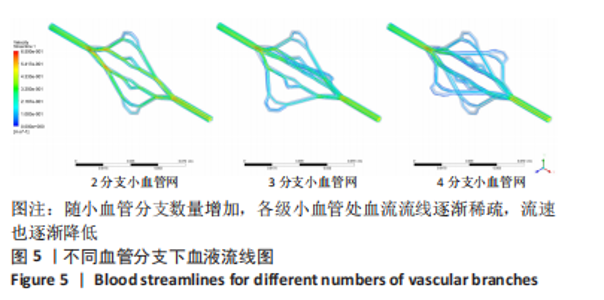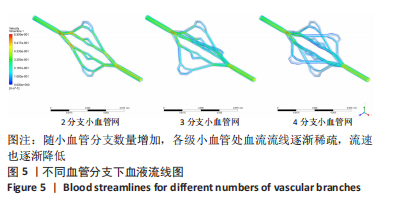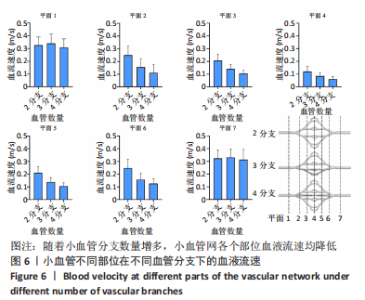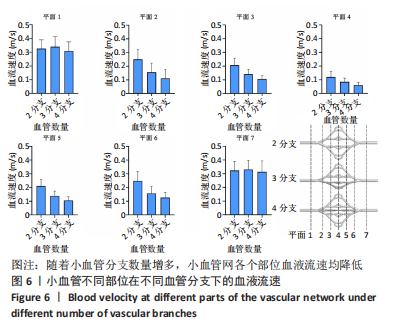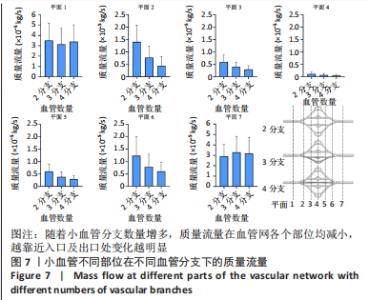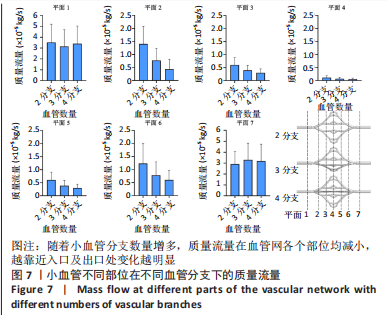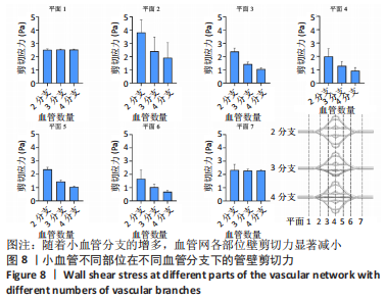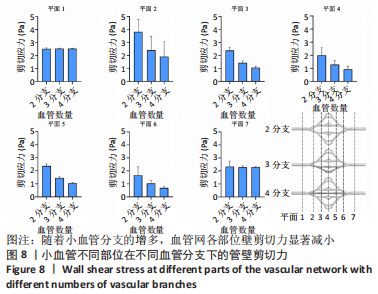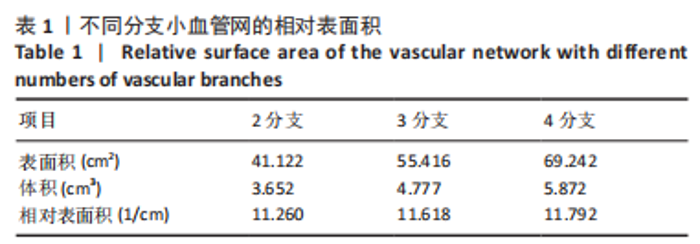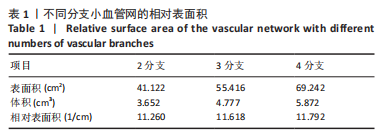[1] 林上进,程群.内皮祖细胞与骨折愈合[J].国际骨科学杂志,2016,37(1):31-35.
[2] SCHINDELER A, MCDONALD MM, BOKKO P, et al. Bone remodeling during fracture repair: The cellular picture. Semin Cell Dev Biol. 2008;19(5):459-466.
[3] KRISHNAN L, WILLETT NJ, GULDBERG RE. Vascularization Strategies for Bone Regeneration. Ann Biomed Eng. 2014;42(2):432-444.
[4] SARAN U, GEMINI PIPERNI S, CHATTERJEE S. Role of angiogenesis in bone repair. Arch Biochem Biophys. 2014;561:109-117.
[5] WAN C, GILBERT SR, WANG Y, et al. Activation of the hypoxia-inducible factor-1alpha pathway accelerates bone regeneration. Proc Natl Acad Sci U S A. 2008;105(2):686-691.
[6] YANG TL, SHEN H, LIU A, et al. A road map for understanding molecular and genetic determinants of osteoporosis. Nat Rev Endocrinol. 2020;16(2):91-103.
[7] RAMASAMY SK, KUSUMBE AP, SCHILLER M, et al. Blood flow controls bone vascular function and osteogenesis. Nat Commun. 2016;7(1):13601.
[8] 刘芳,黄海,邓伟民,等.从骨质疏松骨小梁微血管变化剖析瘀血疼痛的基础[J].中国老年学杂志,2011,31(5):750-752.
[9] 翟子豪,谢义松.活血壮骨汤治疗肾虚血瘀型原发性骨质疏松症临床观察[J].山西中医,2022,38(4):33-35.
[10] 黄敏玲,卢赵琦,申震,等.骨碎补总黄酮干预Notch信号通路影响骨重建过程中成血管-成骨耦联[J]. 中国组织工程研究,2021,25(32):5116-5122.
[11] 申震,姜自伟,李定,等.基于牵张成骨技术比较两种补肾法在成血管-成骨耦联机制中的作用差异[J].中华中医药杂志,2019,34(5):2150-2155.
[12] 王晓燕,李冠武,常时新.三七总皂苷通过血管生成改善绝经后骨质疏松机制探析[J].中国骨质疏松杂志,2014,20(8):964-967.
[13] 郎爽,陈恒亭,马剑雄,等.骨科中的细胞力学研究进展[J].生物医学工程研究,2021, 40(1):88-93.
[14] 谢敏.创伤愈合过程中血管新生模式研究[D].苏州:苏州大学,2009.
[15] RIBATTI D. Genetic and epigenetic mechanisms in the early development of the vascular system. J Anat. 2006;208(2):139-152.
[16] LINDEMANN MC, LUTTKE T, NOTTRODT N, et al. FEM based simulation of magnetic drug targeting in a multibranched vessel model. Comput Methods Programs Biomed. 2021;210:106354.
[17] HAN X, COURSEAUS J, KHAMASSI J, et al. Optimized vascular network by stereolithography for tissue engineered skin. Int J Bioprint. 2018;4(2):134.
[18] 郑利钦,赖厚融,代越星,等.血液黏性对小血管网计算流体力学的影响[J].中国组织工程研究,2023,27(28):4468-4472.
[19] 韩金涛,乔惠婷,韩旭,等.椎基底动脉延长扩张症的计算流体力学分析[J].北京大学学报(医学版),2015,47(2):302-304.
[20] WU LT, WANG JL, WANG YL. Ophthalmic Artery Morphological and Hemodynamic Features in Acute Coronary Syndrome. Invest Ophthalmol Vis Sci. 2021;62(14):7.
[21] STEGEN S, VAN GASTEL N, CARMELIET G. Bringing new life to damaged bone: The importance of angiogenesis in bone repair and regeneration. Bone. 2015;70:19-27.
[22] CARANO RAD, FILVAROFF EH. Angiogenesis and bone repair. Drug Discov Today. 2003; 8(21):980-989.
[23] SCHMIDT VJ, HILGERT JG, COVI M, et al. Flow Increase Is Decisive to Initiate Angiogenesis in Veins Exposed to Altered Hemodynamics. PLoS One. 2015;10(1):e117407.
[24] 李佳宜,房兵.力学因素对血管内皮细胞成血管影响及机制的研究进展[J].医用生物力学,2020,35(6):760-766.
[25] ALBARRAN-JUAREZ J, IRING A, WANG S, et al. Piezo1 and Gq/G11 promote endothelial inflammation depending on flow pattern and integrin activation. J Exp Med. 2018;215(10):2655-2672.
[26] DRIESSEN R, STASSEN O, SJOQVIST M, et al. Shear stress induces expression, intracellular reorganization and enhanced Notch activation potential of Jagged1. Integr Biol (Camb). 2018;10(11):719-726.
[27] URBICH C, DERNBACH E, REISSNER A, et al. Shear stress-induced endothelial cell migration involves integrin signaling via the fibronectin receptor subunits alpha(5) and beta(1). Arterioscler Thromb Vasc Biol. 2002;22(1):69-75.
[28] 亚白柳,李林.高脂血症与微循环功能障碍研究进展[J].医学综述,2011,17(20): 3041-3043.
[29] MATSUMOTO T, MIFUNE Y, KAWAMOTO A, et al. Fracture induced mobilization and incorporation of bone marrow-derived endothelial progenitor cells for bone healing. J Cell Physiol. 2008;215(1):234-242.
[30] 莫恭晓,黄晓军,韦邱梦,等.大黄和虎杖对血瘀症模型大鼠血流动力学和血脂的影响[J].中国临床药理学杂志,2018,34(1):38-40.
[31] 高子任, 李跃华.中医血瘀证与骨质疏松症关系的研究[J]. 中华中医药杂志,2017, 32(11):5154-5157.
[32] KUSUMBE AP, RAMASAMY SK, ADAMS RH. Coupling of angiogenesis and osteogenesis by a specific vessel subtype in bone. Nature. 2014;507(7492):323-328.
[33] XIE H, CUI Z, WANG L, et al. PDGF-BB secreted by preosteoclasts induces angiogenesis during coupling with osteogenesis. Nat Med. 2014;20(11):1270-1278.
[34] 王亮,张鹏,姚喆,等.骨组织H亚型血管在骨质疏松与非骨质疏松骨折患者中的表现[J].中华骨科杂志,2016,36(20):1327-1334.
[35] ALAGIAKRISHNAN K, JUBY A, HANLEY D, et al. Role of Vascular Factors in Osteoporosis. J Gerontol A-Biol. 2003;58(4):M362-M366.
[36] HAUSMAN MR, SCHAFFLER MB, MAJESKA RJ. Prevention of fracture healing in rats by an inhibitor of angiogenesis. Bone. 2001;29(6):560-564.
[37] MAES C. Role and Regulation of Vascularization Processes in Endochondral Bones. Calcified Tissue Int. 2013;92(4):307-323.
[38] 桑晓文,詹红生.骨内血管作为骨质疏松症治疗靶点的研究进展[J].中国骨质疏松杂志,2021,27(8):1209-1212.
[39] ZHANG X, DENG W, JU J, et al. A Method to Visualize and Quantify the Intraosseous Arteries of the Femoral Head by Vascular Corrosion Casting. Orthop Surg. 2022;14(8):1864-1872.
[40] 程坤,李秋尧,高晓斐,等.骨内血管解剖方法及骨内血管分布的临床意义初步研究[J].中华骨科杂志,2021,41(16):1090-1099.
|
